Small Japanese Gardens can be a wonderful way to bring some of the beauty, serenity and calmness of traditional Japanese culture into your own backyard. Whether you are looking for a space to relax and unwind or simply want to create a beautiful garden environment, small Japanese gardens can offer the perfect solution. Read on to learn more about these enchanting gardens and to get inspired for your own unique space.
Recreate Water With A Rock Garden
One of the most popular elements found in traditional Japanese gardens is a carefully arranged rock garden. By strategically placing rocks, pebbles and gravel around your garden you can create the illusion of a winding stream or river. Rocks should have rounded edges and come in various sizes to give off an organic feel. You might also add some moss coverings on the rocks or place a few small plants to add an extra layer of beauty. [1]
Go Miniature With Trees
Japanese gardens often feature intricate, full-sized trees. But if you have a small garden, miniature versions of the same trees can provide an equivalent impact without taking up too much space. Bonsai are one example – it gives your garden a classical Japanese look with plenty of character and requires minimal upkeep. If you don’t want to go with bonsais, you can opt for smaller versions of Japanese Maple, Azalea or Cryptomeria trees.
Additionally, if your garden has limited space and shade, miniature varieties of trees that require little sunlight and thrive in shaded conditions are a great option. Some examples include Japanese maples (Acer palmatum), Japanese umbrella pine (Sciadopitys verticillata) and Kousa Dogwoods (Cornus kousa). With these trees, you can enjoy all the beauty of a larger tree without having to devote too much space or effort. [1]
Have A Go At Cloud Pruning
Cloud pruning is a traditional Japanese art form and an ideal way to add a unique touch to your small garden. It involves carefully trimming and shaping the branches of trees and shrubs, so that they look like clouds in the sky. The results can be stunning – creating beautiful shapes as well as providing much-needed shade for outdoor living areas.
If you have the right tools and some experience in pruning, cloud pruning is a relatively simple task. You’ll need a pair of sharp pruners or loppers and a step ladder if needed to reach higher branches. Start by selecting one or two trees that you want to shape into clouds – preferably conifers or evergreen shrubs with dense foliage. [1]
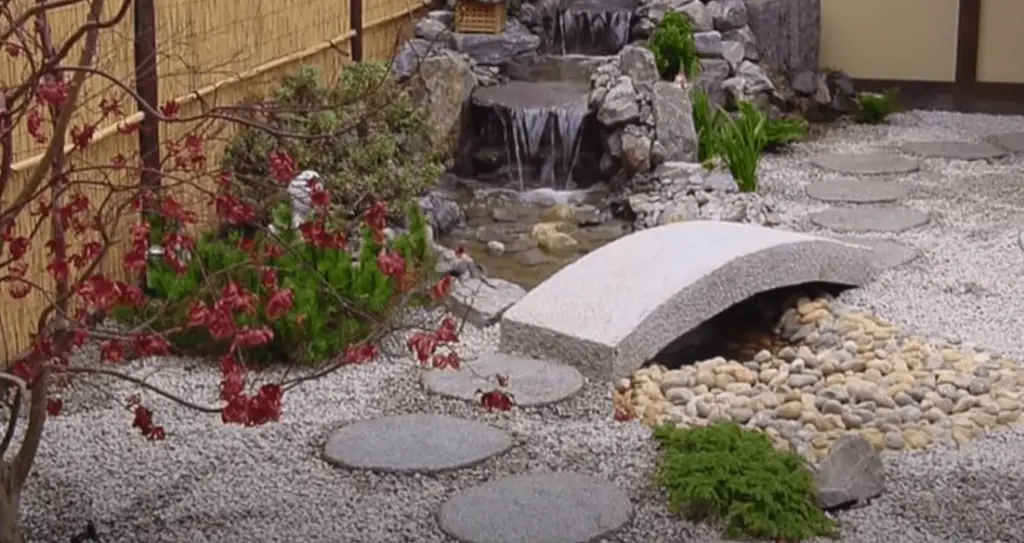
Try Colour-Changing Leaves With A Potted Acer
Acer palmatum, commonly known as Japanese maple, is a popular choice for small Japanese gardens. Its attractive foliage comes in many varieties and provides seasonal interest with its vivid autumnal colours. You can also buy Acer palmatum trees that change colour as the season progresses – from purple to yellow or even pink! Plant one of these in a pot and enjoy the changing display it provides. For an even more stunning effect, plant several trees together in one large pot to create a bold centrepiece for your small Japanese garden. If you don’t have room for a tree, try planting some low-growing groundcover plants such as Ajuga reptans or Pachysandra terminalis around the pot to create a lasting display of color and texture. [1]
Go For Blazing Red Foliage
Bring a bold statement to your small Japanese garden with bright and vibrant foliage. Plants like Azaleas, Barberry, and Pieris are all good options for adding some color to the overall look of your garden. These plants work best in partial or full shade areas, so be sure to keep that in mind when selecting which ones to add. To make the color pop even more, add in some Japanese Maples or Camellias for a touch of bright red. You can also use these plants to create accents and elements that draw attention to certain areas of your garden, such as by creating a small pathway with them. If you want to go all out, try using vibrant red bonsai trees for a stunning focal point. [1]
Grow Japanese Vegetables
Growing Japanese vegetables is an excellent way to bring the essence of Japan into your small garden. Many Japanese vegetables can be grown in containers, such as eggplant, peppers, and squash. Planting Japanese vegetables can also provide a great aesthetic touch to the garden since some varieties have vibrant colors or unique shapes.
When growing Japanese vegetables, it is important to use a soil that is well-draining and rich in organic matter. Also, be sure to space them out properly so they have enough room to grow. Finally, make sure you water regularly and add fertilizer as needed! [1]
Plant Vibrant Azaleas
Azaleas are an essential element to a Japanese garden. If you’re looking to add some vibrancy and color, azaleas can do the trick! Plant them in a variety of colors, shapes and sizes for a truly unique display. Make sure that the soil is well-drained with plenty of organic matter so your azaleas can thrive. Also, adding some mulch around the plants will help to keep moisture in and prevent weeds from growing. With a little bit of TLC, you’ll have beautiful blooms in no time! [1]
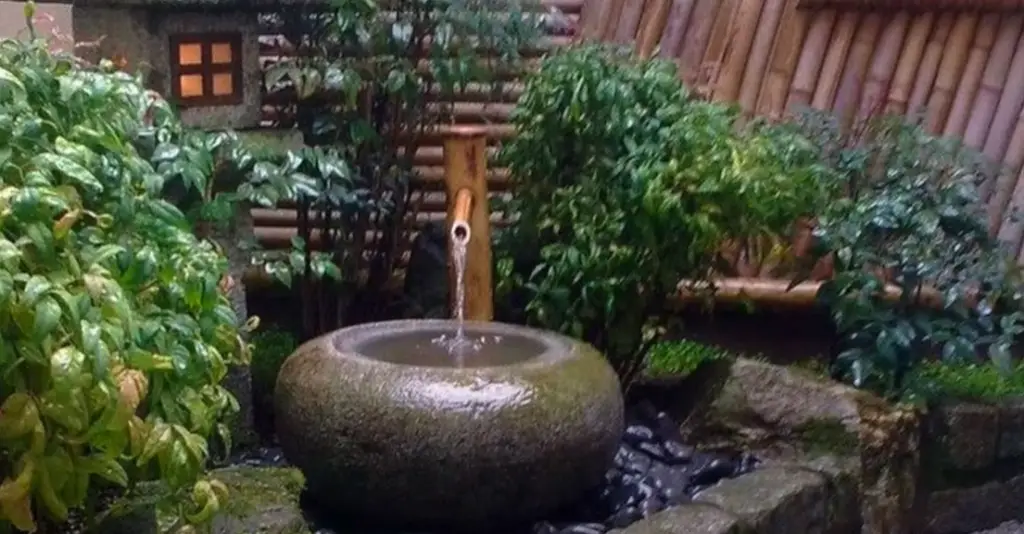
Fill The Air With Cherry Blossom
Cherry blossoms are one of the most important symbols in Japanese gardens. Even if you don’t have a lot of space, you can still create a beautiful and inviting setting with just a few cherry blossom trees. Choose dwarf varieties to keep the canopy low and ensure that your garden remains open and airy. This will also create a delicate and tranquil atmosphere in your garden.
If you have enough space, consider adding a small cherry blossom walkway or path to your garden. This will give visitors the opportunity to enjoy the beauty of these flowers as they move through your garden. For an added touch of elegance, add some solar-powered lights along the path. This will not only illuminate the way but also make your garden look even more stunning at night. [1]
Add A Zen-Like Water Feature
Water features are a popular choice for Japanese gardens, as they add a sense of tranquility and serenity to the space. You don’t need an expansive pond to create an impressive water feature in your garden – even small water fountains or trickling streams can have an equally calming effect. If you’re limited on space, try adding a small stone fountain in the corner of your garden or even an ornamental mini-waterfall. The sound of running water can be incredibly soothing, and it’s sure to draw attention and admiration from all who visit. Once you’ve added a water feature to your garden, consider adding some aquatic plants like lilies or lotuses to further enhance the atmosphere. [1]
Go Minimalist With Outdoor Furniture
When it comes to furnishing your small Japanese garden, go minimal. Choose furniture with clean lines that won’t overwhelm the space. Stick to natural materials like wood and stone, and opt for pieces with a simple design. Avoid bulky or ornate items that will make the garden feel crowded and cluttered. You can also use lighter items like folding chairs and tables, which can be easily moved around to accommodate different activities. If you have the space, add a small seating area with a bench or two for relaxing in the garden. [1]
Create A Calming Fish Pond
A fish pond can be the perfect addition to your small Japanese garden. It will bring a sense of tranquility and harmony as well as plenty of visual interest. You can choose from a wide range of sizes, shapes, and styles for your pond. A few important considerations you should take into account are the size of the area you have available, the type of fish you’d like to keep, and any safety elements that would be required. [1]
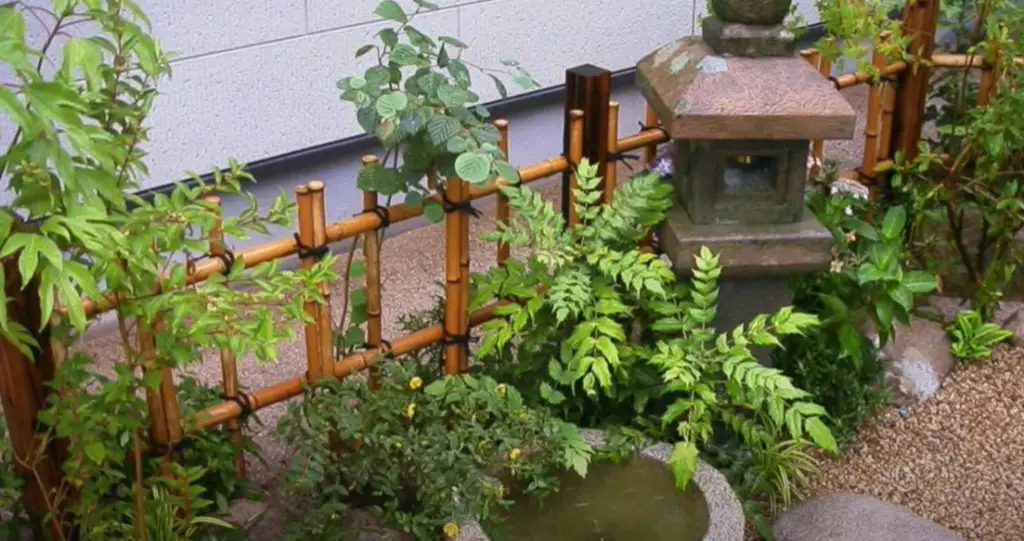
Illuminate Your Space With Pagoda-Inspired Lanterns
Adding small lanterns throughout your Japanese garden is a great way to create a magical atmosphere. Not only that, but by adding lighting to your outdoor space, you will be able to enjoy it for longer during the evenings or on cloudy days. You can find pagoda-inspired lanterns in all sorts of shapes and sizes to fit with the overall aesthetic of your garden. For an extra touch of authenticity, you can use oil or wax candles for lighting instead of electric bulbs. This will also create a calming ambiance and make it easier to relax in your backyard paradise. Just remember to always be safe when using open flames and never leave them unattended. [1]
Enjoy Spring Blooms With A Miniature Magnolia
Small Japanese gardens can be full of beautiful, delicate blooms that add a touch of nature to any outdoor space. The Magnolia tree is a great way to add a splash of color and bring the outdoors into your small Japanese garden. These trees are available in both full-size and miniature varieties, allowing you to customize the look of your garden to fit your space.
The full-size Magnolia trees can reach heights up to 20 feet, while the miniature varieties grow much shorter and require less maintenance than their larger counterparts. The blossoms on most magnolias are a soft pink or white and have a beautiful fragrance that adds an air of peace and tranquility to your garden. Whether you opt for a full-size or miniature variety, planting magnolias in your small Japanese garden will create an eye-catching display of beautiful blooms that are sure to captivate visitors and neighbors alike. [1]
Create A Path From Stepping Stones
One of the most iconic elements in a Japanese garden is a path created from stepping stones. This can be as simple or as intricate as you’d like, depending on the size of your garden and the amount of time and effort you’re willing to put in. It adds a unique touch to any garden and is guaranteed to draw attention.
When placing the stones, try to keep a consistent distance between them so that they look like they naturally fit together. This will create an aesthetically pleasing arrangement and make it easier for guests to navigate through your garden. Once you have completed laying the stepping stones, you can fill the cracks in between with moss or gravel for an even more authentic look. [1]
Get Creative With Moss
Moss is one of the key elements in a small Japanese garden. It’s a beautiful, soft foliage that can be used to line pathways and add texture to rock beds. You can also use moss as an edging for your water feature or pond. Moss is easy to maintain and adds an elegant touch to your garden. For an interesting twist, try creating a moss mural by using layers of different colors and textures. [1]
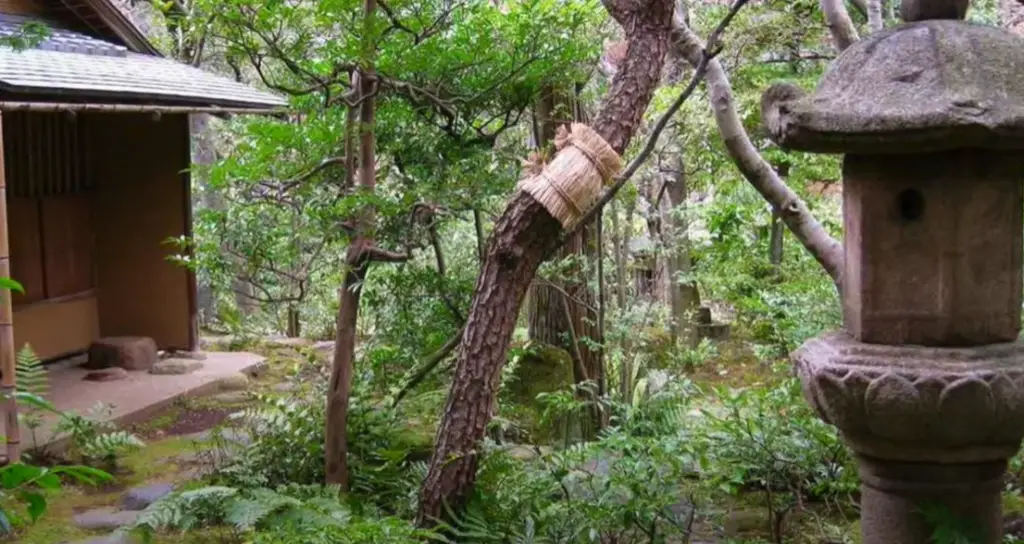
Try A Striking Colour Scheme
Japanese gardens are known for their exquisite colour schemes. If you’re looking to create a small Japanese garden, choosing the right colours can have a huge impact on its overall look and feel. A great way to make your garden stand out is to incorporate bold, contrasting colours. For example, try combining soft shades of pink with vibrant hues of green or blue. You can also add touches of black, grey, and white for extra depth and contrast. Just remember not to go over the top – too many bright colours can overwhelm your garden! With careful color selection, you can create a beautiful small Japanese garden that will have an impact no matter its size. [1]
Train Wisteria Up Trellises
Train wisteria up trellises to cover walls or create a canopy of thick foliage. Wisteria is an especially popular choice for small Japanese gardens due to its vibrant colors and hardy nature. This can serve as the main focal point of your garden, drawing the eye and creating a beautiful atmosphere.
To get the most out of your wisteria, prune it regularly to ensure that the plant takes on a more tree-like shape. As it grows, you can wind the tendrils around trellises and train them to cover walls or archways. Consider wrapping some string or fishing wire around the tendrils as they grow in order to encourage them to wrap around the trellis as they ascend.
Be sure to research how to properly prune wisteria in order to ensure that your plant grows healthy and strong. With regular care, you can create a stunning focal point with your Japanese garden that will last for many years. [1]
Add Height With Bamboo
Adding height with bamboo is one of the ideas that will come up often when considering a small Japanese garden. Bamboo can add texture and personality to your outdoor space, as well as provide much-needed privacy from busy streets or close neighbors. Planting several tall varieties of bamboo in large pots around your patio or deck area will add a natural, Japanese-inspired look to your outdoor space. If you are concerned about bamboo spreading too quickly, you can opt for more compact varieties which won’t take over the garden as easily. You may also want to consider using faux bamboo for a maintenance-free option. [1]
What Plants Are In A Japanese Garden?
Japanese gardens often feature a variety of plants, such as evergreen trees, maple trees, bamboo, azaleas and camellias, hosta and ferns. Each plant plays an important role in creating the peaceful atmosphere that is characteristic of Japanese gardens. For example, evergreen trees are used to symbolize strength and longevity while bamboo represents resilience.
In addition to evergreens and bamboo, grasses are another important element in Japanese gardens. Grass is used as a backdrop for other plants and also helps break up large expanses of lawn or pavers. To create the look of a well-manicured lawn, use grass clippings instead of chemical fertilizers and herbicides. [1]
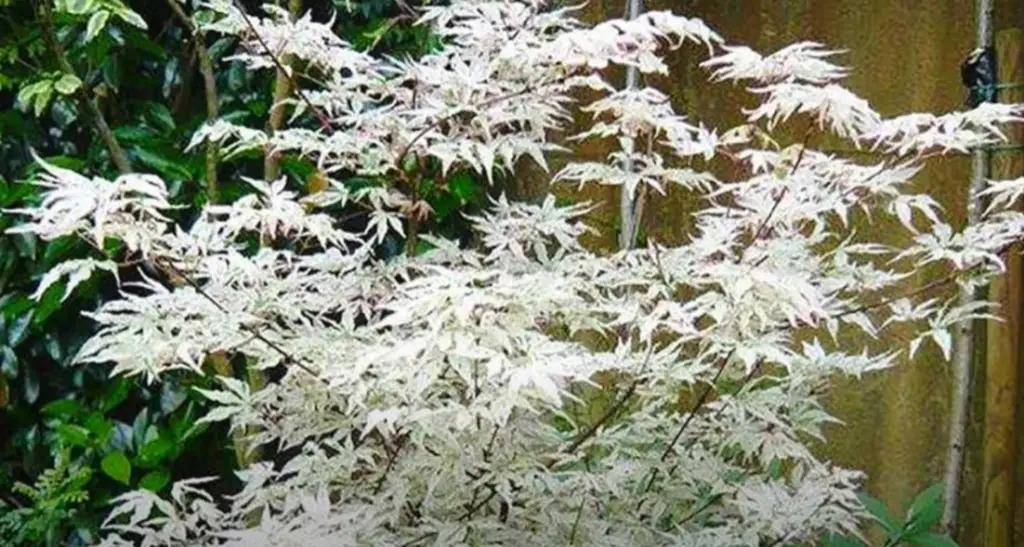
How Do You Arrange Rocks In A Japanese Garden?
Rocks are a key element in Japanese gardens and act as the focal point for many designs. When arranging rocks, you’ll want to keep an overall triangle shape in mind – with two large rocks at each end and one smaller rock at the top. This will give your garden a balanced and harmonious appearance. That said, don’t be afraid to experiment with different shapes and placements. Rocks can be used to form pathways, create levels of elevation, or simply break up the monotony of a flat landscape. [1]
Why Are Japanese Bridges Painted Red?
One of the most recognizable features of a small Japanese garden is the iconic red bridge. This type of bridge symbolizes an entry point to another state or world, allowing you to leave behind your old life and venture into a new one. The bright color also stands out in any garden, creating a focal point that draws attention. [1]
FAQ
How do you start a small Japanese garden?
Creating a small Japanese garden is all about selecting and arranging the right elements. You can start by creating a space dedicated to your garden, such as a terrace or courtyard. Next, choose plants that thrive in your climate and soil type. Select stones and other materials that suit the style of the garden, such as gravel, bamboo fencing, stepping-stones, and a water feature. Finally, choose the right décor to complete your small Japanese garden.
What are the 3 essential elements of a Japanese garden?
The three essential elements of a Japanese garden are stones, plants and water. Stones symbolize the connection between heaven and earth, while plants represent growth and renewal. Water features can be used to bring movement, sound and reflection into the garden.
What are the 5 elements of a Japanese garden?
The five elements of a Japanese garden are stones, plants, water, ornaments and pathways. Stones represent the connection between heaven and earth. Plants bring growth and renewal to the environment. Water features create movement, sound and reflection in the garden. Ornaments can be used to add color and charm while pathways provide an entrance into the garden or a way to connect one area with another. Finally, bridges and arbors provide an interesting focal point in the garden and can be used to divide the different sections.
What plants are used in small Japanese gardens?
Many different types of plants can be used in small Japanese gardens, including evergreen bamboo and maples, flowering cherry trees and azaleas, ornamental grasses, and groundcover such as moss. Depending on the size of your garden space, you can also choose other shrubs and perennials to add more texture and color to your garden.
What flowers go in a Japanese garden?
Flowers are important for adding color and charm to a Japanese garden. Some popular choices for a small space include cherry blossoms, azaleas, peonies, mums, chrysanthemums, irises and lilies. You can also use flowering vines such as wisteria and clematis to add height and texture to your garden.
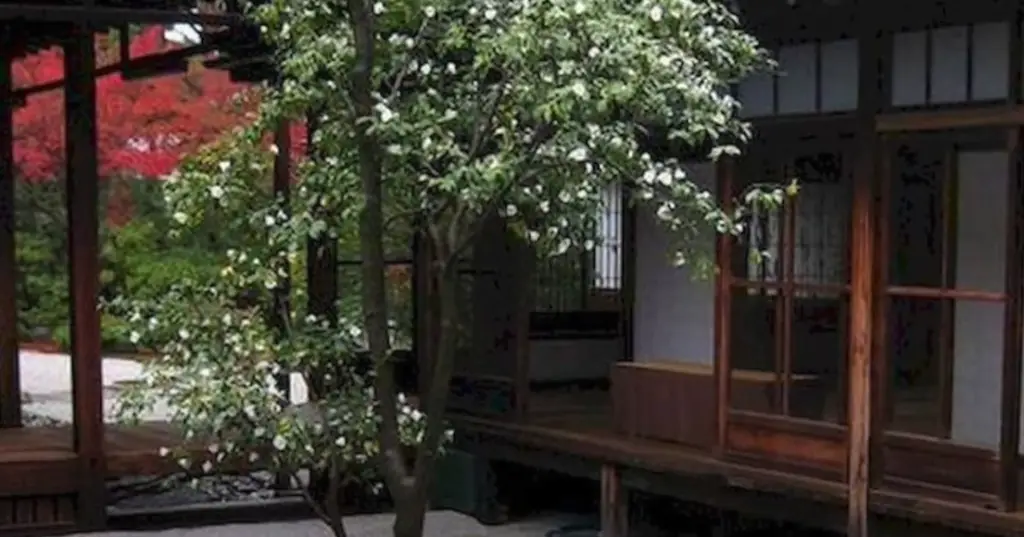
What is a Zen garden plant?
A Zen garden plant is a type of small evergreen shrub or tree that is often used in Japanese-style gardens. Some popular choices include Juniper, Hinoki Cypress and Bamboo. These plants are chosen for their low maintenance needs and their ability to provide year-round interest with their unique foliage. They also create a calming atmosphere and provide a sense of tranquility.
How do you make a mini Zen garden?
Creating a mini Zen garden is a great way to bring peace and beauty into your home. Start by selecting a shallow tray or container for your garden. Then, choose stones that will form the foundation of your garden, such as river pebbles or gravel. You can also add sand or crushed stone to create texture and movement in the garden. Finally, add plants and décor as desired to complete your mini Zen garden.
How to design a Buddha garden?
Designing a Buddha garden is all about creating an environment of peace and serenity. Start by picking a spot in your yard that gets plenty of sunlight and has good drainage. Then, select the right plants for the space such as evergreen bamboo, maples and azaleas. Incorporate stones, gravel or sand to create a strong foundation and include an ornamental water feature to add sound and movement. Finally, place a Buddha statue as the focal point of your garden and decorate with other elements such as lanterns and bridge arches.
What are the rules of the Zen garden?
The rules of the Zen garden are simple, yet important. First and foremost, it is important to be mindful when creating your garden. Consider what elements will bring peace and tranquility into the space. When choosing plants and décor, opt for items with clean lines and neutral colors that won’t overwhelm the senses. Finally, make sure to keep the garden clean and uncluttered for maximum zen vibes.
Useful Video: 35 Lovely Small Japanese Garden Design Ideas
Conclusion
Small Japanese Gardens are a wonderful way to add charm and beauty to any outdoor space. They can be designed to fit in with any style of home and garden, from traditional and rustic to contemporary or modern. By using the right plants and materials, these gardens can stay beautiful for years to come. Additionally, by incorporating elements such as a rock garden, pond, water fountain, or sand and gravel area, you can create an appealing space that’s sure to be enjoyed by many. With a bit of creativity and knowledge about your plants and materials, you can design a Small Japanese Garden that will bring tranquility and beauty to your outdoor oasis. Thank you for taking the time to learn more about Small Japanese Garden Ideas!
References:
- https://www.gardeningetc.com/design/small-japanese-garden-ideas





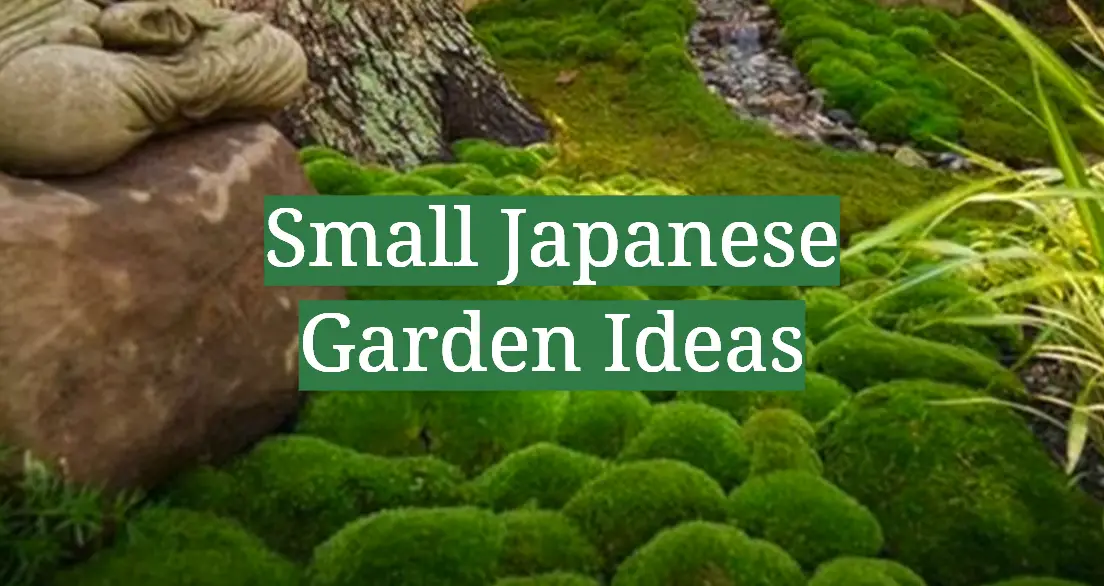




Leave a Reply
View Comments